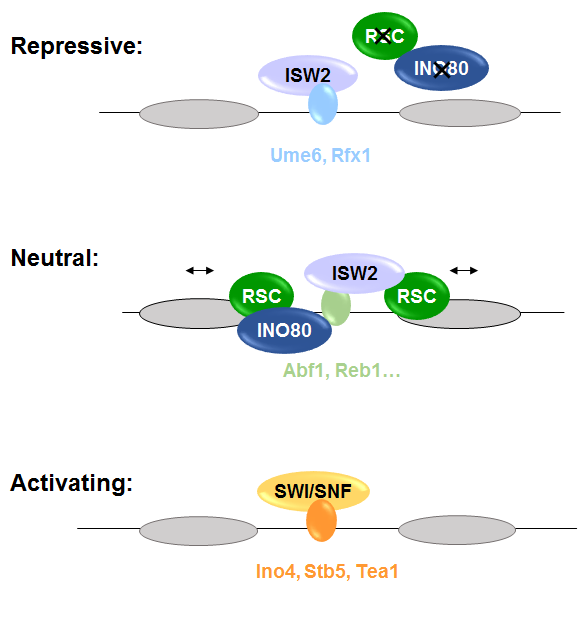
Pioneer factors open closed chromatin and generate nucleosome-depleted regions (NDRs). NDRs in yeast are also affected by ATP-dependent chromatin remodelers. How pioneer factors and remodelers coordinate in nucleosome invasion and NDR formation is unclear. In principle, remodelers can function either upstream or downstream of pioneer factor: by translocating nucleosomes, remodelers can promote transient exposure of DNA and thus facilitate the binding of pioneer factors (upstream function); after pioneer factors bind, they may recruit remodelers to reposition the nearby nucleosomes (downstream function). To dissect the sequence of events, and also to probe specificity between these two groups of factors, we designed a high-throughput method to systematically study the interplay between pioneer factors and chromatin remodelers. By combining an integrated synthetic oligonucleotide library with DNA methyltransferase-based, single-molecule nucleosome mapping, we measure the impact of remodelers on NDRs generated by individual pioneer factors in the same sequence context. We find that remodelers are dispensable for nucleosome invasion by pioneer factors, and they only function downstream of pioneer factor binding to modulate the NDR length. We also found cases where remodelers show show high specificity towards certain pioneer factors; however, in most cases, remodelers are recruited in a factor-nonspecific and NDR length-dependent manner. Overall, our study provides a framework to investigate how pioneer factors and remodelers cooperate to regulate chromatin opening.
Related publication:
- Partitioned Usage of Chromatin Remodelers by Nucleosome-Displacing Factors
Chen HY, Kharerin H, Dhasarathy A, Kladde M, and Bai L (2022)
Cell Reports

